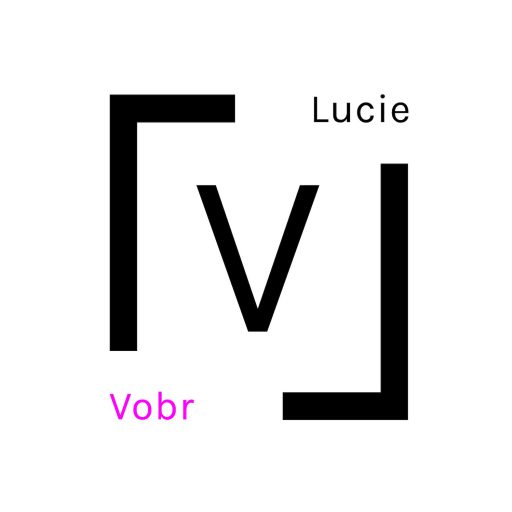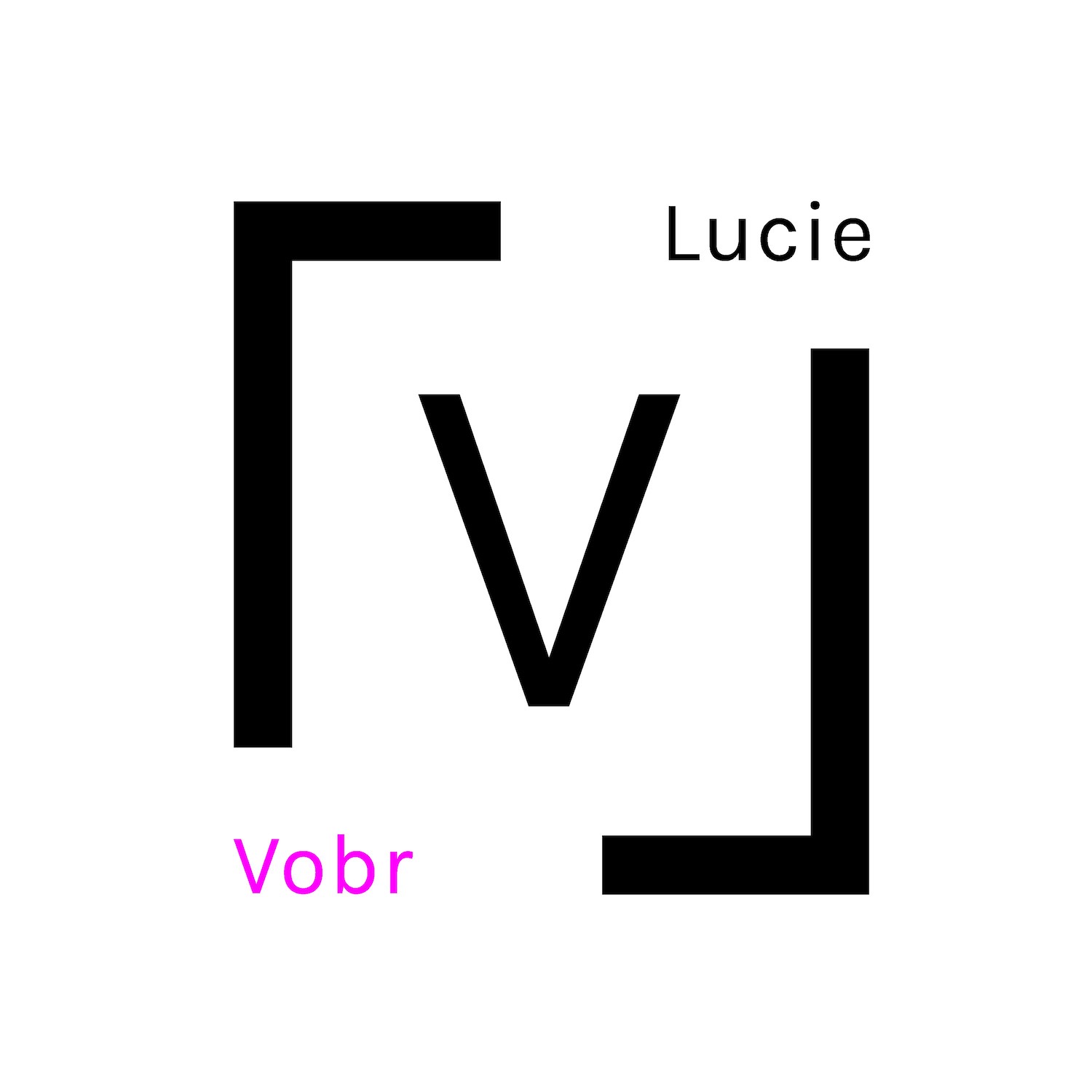Bio-eng
LuciJe Vobr (CZ/DE)
is a Czech visual artist whose work focuses on the issue of touch and its associated transformation throu– gh destructive gesture. She does not perceive this socially problematic gesture as negative, but above all as positive, thanks to which we can give space for our emotions to run their course, as well as thanks to which something new and perhaps even more useful can be created. The results are often objects made of seemingly fragile materials such as paper, tape and porcelain. The transformation of these materials takes place through careful and singular processing, for example, by systematically and painstakingly scribbling on the paper with a pencil before the visual transformation from white and soft paper to a hard metal-like object.
As a member of the art group Gravidity group, Lucie is also involved in various interactive events, in which she combines site-specifific approa– ches with installation, performance and workshops in which she active– ly involves visitors.
Statement-eng
I am sure you know this feeling, you are standing in a galleryspace and you can’t get over the desire to touch the exhibited artwork. You are thinking about the quality of the material; is this stone as hard and as cold as I expect? Is this work really made from stone or is it a mere imitation? And what about the structure? Is it real or has it just been painted? How deep is it? Could I hurt myself if I touched it? Or is it so smooth that my finger would slip down?
Thinking about these mysteries pushed aside much more important questions, for example about the meaning of this work of art, or what the artist wanted to express. For in my mind prevailed questions relating the softness and hardness of the artwork because if the work seemingly made from stone could be squeezed, the authors message for people and the whole universe would be totally different.
In my eyes, objects exhibited in a traditional environment lack tangibility and therefore provability. Is this the message the artist wanted to convey? I don’t think so … From my point of view, gallery goers would be able to work their way to understanding the meaning of the art work easier, if they could touch it and answer all related questions beforehand – move to the next level in understanding an art piece.
The question if what I see is real or not has been asked by artists for centuries, starting with the realistic representation of the dog’s fur in the painting called “Arnolfini-wedding” by Van Eyck. The fur feels surprisingly smooth and fluffy which irritates my imagination when I see it and makes me want to touch it. But can I really? No, it is just a representation and it takes us back to the doubts about the concrete art work above.
This uncertainty brings us to the simulation, when the simulation becomes more real than reality itself. When our senses are so confused that we are not able to differentiate between them anymore.
These thoughts and experiences have led me to the realization that in art the sense of touch is not sufficiently represented. But how does it look like? My source of inspiration have been frequently repeating everyday situations that have something to do with touch.
Bio-de
LuciJe Vobr (CZ/DE)
Lucie erzählt mit Hilfe von Bleistift, Farbe, Papier und Klebeband eine Geschichte von einer Verwandlung. Da sie die Techniken von einer Seite nimmt und die Materialien von einer Anderen, hat sie die Position einer Grenzgängerin, die neue Perspektiven schafft.
Sie absolvierte das Masterstudium der Bildhauerei an der Akademie für Kunst, Architektur und Design Prag und das Bachelorstudium der Neuen Medien an der Westböhmischen Universität.
Um ein tieferes Verständnis für die verschiedenen Ansätze der Kunst zu erlangen, verbrachte sie mehrere Semester an Universitäten in Taiwan. An der NTUA beschäftigte sie sich mit chinesischer Malerei und Kalligraphie und mit Multimedia Design an der CTU.
Da die Zusammenarbeit neue Perspektiven eröffnet, gründete Lucie mit Freundinnen eine Kunstgruppe namens Gravidity. Sowohl befassen sich die Projekte mit der Position des menschlichen Körpers im Raum und in der Umwelt, als auch kombinieren ortsspezifische Ansätze mit Installation, Performance und Workshop.
Statement-de
Dieses Gefühl ist Ihnen bestimmt bekannt. Sie stehen in der Galerie und kämpfen buchstäblich mit dem Wunsch, das ausgestellte Objekt zu anzufassen. Sie denken über das Material nach: Ist der Beton wirklich so hart und kalt, wie er scheint? Ist dieses Werk wirklich aus Beton oder geht es nur um eine Imitation? Wie sieht es mit der Struktur aus? Ist sie echt oder nur gemalt? Wie tief ist sie? Werde ich mich verletzen, wenn ich mit dem Finger darüberstreiche? Oder ist sie so glatt, dass meine Finger über die Oberfläche gleiten können?
Fragen nach der Bedeutung des Werks oder was der Autor sagen wollte, wurden weggeschoben. In meinen Kopf hat immer die zwanghafte Frage gewonnen, ob das Werk weich oder hart ist. Dieser Kampf ist nicht so banal, als man denken konnte. Falls das als Beton scheinende Werk zugleich weich als Schwammstoff wäre, würde die künstlerische Botschaft für die Menschheit und Kosmos ganz anderes klingen.
Deshalb ist das ausgestellte Objekt in meinen Augen unfassbar und deswegen unbeweisbar. Ist das die Botschaft, die der Künstler ausdrücken wollten? Ich bin mir nicht sicher. Aus meiner Perspektive würden die Kunstinteressierenden die Meinung des Werkes einfacher verstehen, wenn es ermöglicht wäre, die Werke anzufassen und so diese Fragen im Voraus zu beantworten.
Seit der realistischen Darstellung des Hundes auf dem Gemälde „Arnolfini- Hochzeit“ von Van Eyck stellen wir uns in Kunst die Frage, ob das Dargestellte realistisch ist oder nicht. Wenn ich dieses Bild betrachte, fühle ich das kuschelweiche, flauschige Fell des Hunds. Diese Situation bringt uns zurück zu Zweifeln an der Beweisbarkeit des Betonkunstwerks am Angang.
Diese Unsicherheit führt uns zur Simulation, wenn die Simulation realer als die Realität selbst wird und unsere Sinne nicht mehr in der Lage sind, die Simulation von der Realität zu unterscheiden.
Diese Gedanken und Erfahrungen führten mich zur Folgerung, dass Berührung nicht genug in der Kunst repräsentiert wird. Aber wie sieht das in der Praxis aus? Ich lasse mich oft von alltäglichen Situationen inspirieren, die mit der Berührung zusammenhangen.
Bio-cz
LuciJe Vobr (CZ/DE)
Jako členka umělecké skupiny Gravidity group se Lucie věnuje zároveň i různým interaktivním eventům, ve kterých propojuje site-specifific pří– stupy s instalací, performancí a workshopem do kterých aktivně zapoju– je návštěvníky.
Statement-cz
Znáte ten pocit, stojíte v Galerii a vysloveně se perete s touhou se vystaveného objektu dotknout. Přemýšlíte o jeho materiálu, je opravdu ten kámen tak tvrdý a chladný, jak se zdá? Jeto toto dílo opravdu z kamene nebo se jedná o pouhou imitaci? Co struktura? Je opravdová, nebo jen namalovaná? Jak je hluboká? Poraním se, pokud po ní přejedu prstem? Nebo je tak hladká, že mé prsty po ní sklouznou?
Přemítání o těchto záhadách vystrnadilo důležitější otázky, jako například o čem dílo pojednává, nebo co chtěl autor říci. Neboť v mé hlavě vždy převážily obsesivní myšlenky na to, zdali je dílo měkké nebo ne, protože pokud by se dílo vypadající jako kámen dalo vysloveně zmačknout, autorův vzkaz lidem a vesmíru by zněl jinak.
Pro mě osobně je ale tradičně vystavený objekt neuchopitelný, takže neověřitelný. Je toto ten vzkaz, který autor zamýšlel? No nejsem si jistá, že vždy se jedná o úmysl. Z mého pohledu by divák byl schopen se jednodušeji dopracovat k významu díla, pokud by se jej mohl dotknout a tyto otázky si tím pádem předem zodpovědět.
Již od realistického znázornění psa na malbě „Svatba Arnolfiniových“ od Van Eycka si jako diváci v umění klademe otázku, zdali to, co je zobrazeno, je reálné či nikoliv. Při pohledu na tento obraz si osobně představuji jemnou, nadýchanou srst psa a jaký bych mohla mít požitek z jeho hlazení…
Což nás vrací zpět k pochybám o opravdovosti betonového díla na začátku.
Toto znejistění nás přivádí k simulaci, kdy se simulace stává reálnější než realita sama. Kdy jsou naše smysly tak zmatené, že už neumí rozlišit mezi realitou a simulací.
Tyto úvahy a zkušenosti mne přivedly k zjištění, že v umění není dostatečně zastoupený hmat. Ale jak to vypadá v praxi? Jako inspirační zdroj mi často slouží stále se opakující každodenní situace vztahující se k hmatu.
exhibitions
artist in residence program
2023 Taipei Artist Village, Taipei
2017 Egon Schiele Art cenrum, Český Krumlov
exhibitions
2023
- Ornamental crime scene, Frontier Gallery No.9 Taipei Artist Village Treasure Hill (solo)
- Viviane Fontaine International Paper Triennial 2023, Museé de Charmey, Charmey
2022
- Festival Sonda, Planetárium Brno
- Inverze, Oblastní Galerie Vysočiny v Jihlavě,
- Jihlava Fresh Legs 2022, Inselgalerie, Berlin
2021
- White, Black and Pink, Výstavní síň Čáslav,
- Global Paper 5, Stadtmuseum Deggendorf
- Who’s affraid to draw, Zeitraumexit, Mannheim
- Festival Jinčí čin, Jičín
- Space Between, Prenzlauer Studio, Berlin
2020
- Coronale 2020, Mannheimer Kunstverein, Mannheim
2019
- Please change your clothes II., Das Giftraum, Berlin
- Please change your clothes I., Helmut art space, Leipzig

2018
- Subterein, Galerie Suterén, Brno
- Kunstbacken, Dankbar Mannheim, Mannheim (solo)
- 14. Nachtwandel, Atelier 23, Mannheim
- Akt, textilní výrobna Slezan, Frýdek-Místek
- Spring Collective, Filippo ioco Gallery, Barcelona
- In der Reihe, Zeitgenießische Galerie, Heidelberg (solo)
2017
- Výstava pro introverty, Zámecká galerie ve Zruči nad Sázavou
- Místo mezi, Divadlo v Řeznické, Praha (solo)
- Sedimenty, Ukradená Galerie, Český Krumlov (solo)
2016
- Čtení z kůže z černé kostky, Artotéka městské knihovny v Praze (solo)
- Sexy, Pragovka Art District, Praha
- Festival Sinking song, Floating Castle, Grad Sněžník, Kozarisče
2015
- Klíček, Galerie Nika, Praha (solo)
2014
- Papír snese všechno, Papírna, Plzeň
- Hologram, Galerie září, Praha
- Pokoje 2. Containall, Praha
2013
- Site Specific, Světovar, Plzeň
- New wave Photography 2013, Czuly Barbarzynca, Krakow
- New wave Photography 2013, Crypth Gallery, London
Stay in touch

